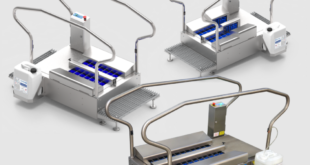Roger Fleury explains why it’s time production planners took a demand-driven approach
While variety may have been the spice of life in the past, it is simply the standard expectation of 21st Century buyers.
This shift has largely occurred in the past three decades and many businesses are still playing catch up.
When Coca Cola launched its iconic cola product in 1886, there was only one flavour made. It stayed this way for almost a century, until the low-calorie variant was launched in 1981.
Fast forward to today and there are more than one hundred variations of the iconic drink on the market, excluding the limited edition flavours that appear from time to time.
Modern customers are spoiled for choice and buying behaviours have changed in line with this.
As such, businesses — regardless of whether they produce beverages or manufacture industrial systems — now face unprecedented levels of uncertainty from markets and customers alike.
Despite this market uncertainty, most operations managers continue to manage production using old models that are ineffective for modern consumer demand.
Instead of using genuine demand to pull products through the supply chain, managers still use demand forecasting and material requirements planning (MRP) principles to push products to market — irrespective of actual demand.
While MRP was an effective means of generally keeping production in line with requirements when it was first conceived in the 1960s, the choice available to customers today makes demand unpredictable.
As a result, there is often a great disparity between actual customer demand and that predicted by forecasting, which results in wasted stock or underproduction.
Both eventualities harm businesses and highlight the fact that forecasting is dangerous for modern production planners.
To properly manage demand, planners and operations managers must stop forecasting demand and begin only allocating stock according to qualified sales orders using demand-driven MRP (DDMRP).
Traditionally, supply chains managed using ERP systems with MRP principles encounter problems as suppliers throughout the chain take a better-safe-than-sorry approach to production and stockpile inventory to account for demand fluctuations. This distorts demand signals, leading to the bullwhip effect and wastage.
DDMRP systems avoid this as they provide production planners with an interface that allows for effective inventory management in line with qualified sales orders. This ensures product and stock is held in buffers at strategically selected points throughout the chain that decouple the supply chain, reduce lead times and account for variability.
These buffer levels are dynamically adjusted, allowing planners to see at a glance whether stock is required at any point in the supply chain.
Being able to recognise this efficiently prevents the usual supplier overreaction and subsequent bullwhip effect.
Effectively, the components of DDMRP allow production planners to use ERP systems such as Microsoft Dynamics 365 more effectively to manage demand, rather than respond to speculative requirements. This gives planners more control over the supply chain and allows for greater business agility, as well as eliminating the risk of supply shortages.
With more than 100 flavour variants available, it’s not a surprise that Coca Cola uses DDMRP.
Production planners that want to manage, and not be managed by, market volatility and customer demand should follow suit and experience the difference.
Roger Fleury is Managing Director of enterprise resource planning (ERP) specialist Ardent Solutions.
 Engineer News Network The ultimate online news and information resource for today’s engineer
Engineer News Network The ultimate online news and information resource for today’s engineer




